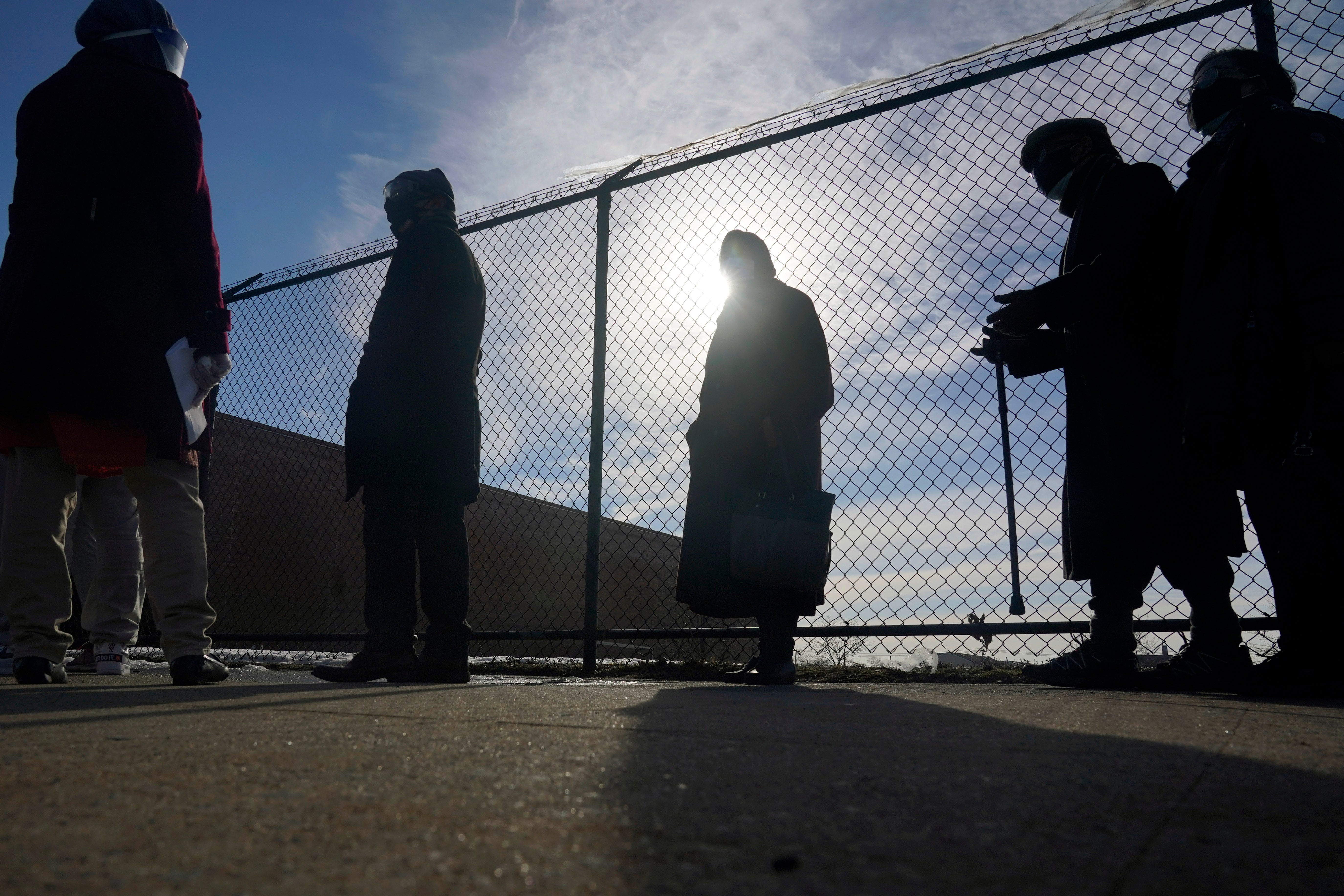New coronavirus variant in New York spurs caution, concern
Scientists have identified a mutated version of the coronavirus spreading in New York

Your support helps us to tell the story
From reproductive rights to climate change to Big Tech, The Independent is on the ground when the story is developing. Whether it's investigating the financials of Elon Musk's pro-Trump PAC or producing our latest documentary, 'The A Word', which shines a light on the American women fighting for reproductive rights, we know how important it is to parse out the facts from the messaging.
At such a critical moment in US history, we need reporters on the ground. Your donation allows us to keep sending journalists to speak to both sides of the story.
The Independent is trusted by Americans across the entire political spectrum. And unlike many other quality news outlets, we choose not to lock Americans out of our reporting and analysis with paywalls. We believe quality journalism should be available to everyone, paid for by those who can afford it.
Your support makes all the difference.Another mutated version of the coronavirus has popped up in New York City, and experts reacted to the the news with a mixture of caution and concern.
The new variant first appeared in the New York area in late November, and has since cropped up in neighboring states, according to researchers at the California Institute of Technology, one of two teams to share their work this week.
But how problematic the variant may be isn’t known yet. Viruses are constantly mutating — or making typos in their genetic code — as they spread and make copies of themselves.
“Most are not of particular concern,” said Francois Balloux, director of the University College London’s Genetics Institute.
However, he added, “Noticing them early, flagging them, raising concern is useful."
That's because some genetic tweaks can be worrisome, especially if they help the virus spread more easily, make it more deadly or curb the effectiveness of vaccines. Scientists use genome sequencing and other research to figure out which are a potential problem.
New York City health officials and Mayor Bill de Blasio on Thursday sought to tamp down worries about the new variant, emphasizing that the new research is preliminary and little is known about the variant.
“Some variants are just that, they’re variants.” said Dr. Jay Varma, senior health adviser to the mayor.
WHAT DID THEY FIND IN NEW YORK?
Two research groups — at Caltech and Columbia University in New York — released papers this week describing their findings about the new variant. Neither paper has been published or reviewed by other scientists.
The Caltech researchers found that the new variant showed up in about a quarter of the 1,200 virus sequences they looked at this month. The variant has also shown up in New Jersey and Connecticut and has made “isolated appearances across the country,” said CalTech's Anthony West, a co-author of the paper.
On Thursday, Columbia University researchers released their research that scrutinized about 1,100 virus samples from patients treated at the university's medical center, dating back to November. During the second week of February, the new variant was identified in 12% of the samples, they reported. They also found patients infected with the mutated virus were more likely to be older and have been hospitalized.
Both groups noted that the new variant has a mutation that could potentially weaken the effectiveness of vaccines — a mutation seen in other worrisome variants.
“There is clearly something to keep an eye on,” Balloux said.
HOW MANY OTHER VARIANTS ARE THERE?
New variants have been showing up throughout the pandemic, but three are considered the most worrisome — they've been designated “variants of concern." They were first detected in Britain, South Africa and Brazil but have spread to other countries.
The one identified in the U.K. late last year has since been found in 45 U.S. states, according to the Centers for Disease Control and Prevention.
The strain is concerning because it has so many mutations, nearly two dozen. Some are on the spiky protein that the virus uses to attach to and infect cells — and that current vaccines and antibody drugs target.
One of the spike protein mutations is seen in the variants discovered early on in Brazil and South Africa, and, now, the new variant in New York.
A variant that has been spreading in California is also getting attention. It's been found in 40% to 50% of samples examined by the Los Angeles Count Department of Public Health, according to Director Barbara Ferrer. But there isn't enough rigorous research to determine what, if any, effect its mutations might have.
WHAT'S NEXT?
After what many described as a slow start, the federal government in recent weeks has ramped up its genetic sequencing to look for and study virus variants to figure out which ones might be a problem. In the meantime, Ana S. Gonzalez Reiche, a virologist at Mount Sinai’s Icahn School of Medicine, urged caution.
“Without evidence, we don’t need to alarm ourselves about every variant detected,” she said.
Studies are raising concern that first-generation COVID-19 vaccines don’t work as well against a variant that first emerged in South Africa as they do against other versions. In response, drug companies are already figuring out how to modify their vaccines.
Experts say that in the meantime, public health measures like social distancing and masks will reduce opportunities for the coronavirus to continue mutating and run rampant.
“Emerging of variants will occur," Dr. Anthony Fauci, the nation’s leading infectious disease expert, told NBC on Thursday. "The trick is when they do occur, to prevent them from spreading.”
___
The Associated Press Health and Science Department receives support from the Howard Hughes Medical Institute’s Department of Science Education. The AP is solely responsible for all content.